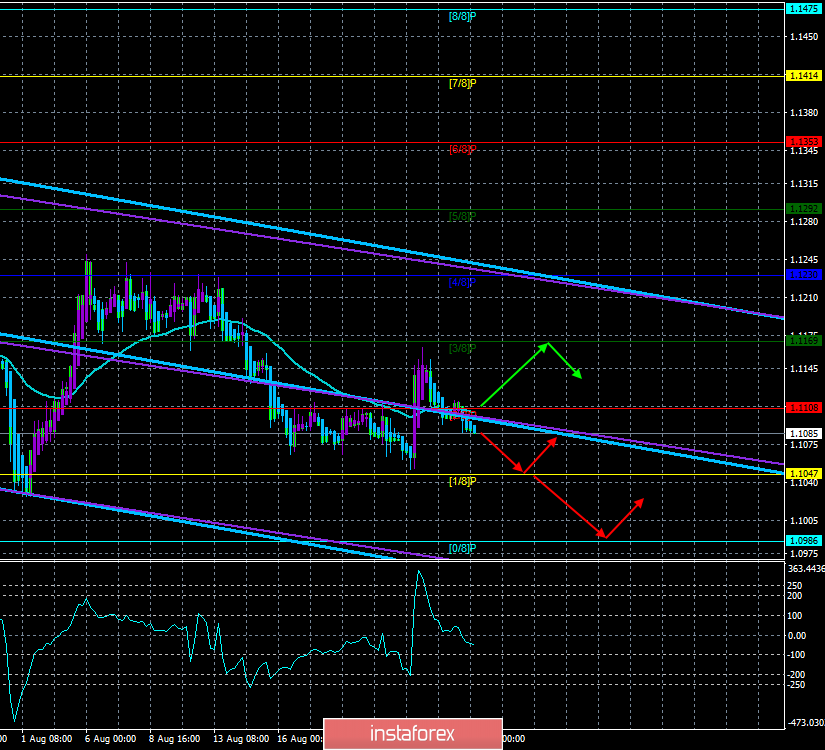4-hour timeframe

Technical data:
The upper channel of linear regression: direction-down.
The lower channel of linear regression: direction-down.
The moving average (20; smoothed) - sideways.
CCI: -52.8697
Well, the euro spent a little time above the moving average line. The bears returned the initiative in their hands, and now, the euro/dollar pair is inclined to fall again. We do not believe that the "Italian" crisis is to blame for the fall of the euro. At one time, the euro exchange rate was pressured by the "Greek" crisis, then there were problems with some other EU States, now there are Italy and the UK. In fact, low macroeconomic indicators of the EU economy, the ECB's intentions to soften the already ultra-soft monetary policy in the near future, revive the quantitative stimulus program, start a long-term lending program for commercial banks TLTRO, as well as the change of the ECB's leadership (the place of Mario Draghi will be taken by Christine Lagarde on October 31) affect the unattractiveness of the euro in the foreign exchange market. We believe that until the situation changes dramatically, for example, the slowdown and decline in the main economic indicators of the eurozone does not stop, we can't count on the euro strengthening.
Of course, there is another option: unexpectedly, the American statistics will begin to disappoint, as it was a month ago. The formal reason for this is a trade war with China. However, first of all, as we have already found out earlier, the trade war does not bring a particularly negative impact on the EU economy. It affects the economy of China more, whose GDP is slowing at a record pace. Secondly, the trade war has been going on for about a year, some US indicators have declined, so what? The dollar fell? No. Because the situation in Europe is worse anyway. And if US President Donald Trump also starts a trade war with the eurozone, it will threaten the latter with a strong reduction in GDP and industrial production, not to mention an even greater fall of the European currency against the dollar.
From a technical point of view, everything is clear and simple. The EUR/USD pair has fixed below the moving, the last bars of the indicator Heiken Ashi painted in blue. Also, the pair is near its two-year lows and may update them soon. The mood in the market is definitely "bearish".
Nearest support levels:
S1 – 1.1047
S2 – 1.0986
S3 – 1.0925
Resistance levels:
R1 – 1.1108
R2 – 1.1169
R3 – 1.1230
Trading recommendations:
The euro/dollar pair has fixed below the moving. Thus, it is now recommended to trade downwards with the first target of 1.1047. It is not recommended to buy the euro now, as the technical picture, just like the fundamental one, does not imply the strengthening of the pair. No macroeconomic publications are planned for today in Europe and the States.
In addition to the technical picture, fundamental data and the time of their release should also be considered.
Explanation of the illustrations:
The upper linear regression channel – the blue line of the unidirectional movement.
The lower linear regression channel – the purple line of the unidirectional movement.
CCI – the blue line in the indicator window.
The moving average (20; smoothed) – blue line on the price chart.
Murray levels – multi-colored horizontal stripes.
Heiken Ashi is an indicator that colors bars in blue or purple.





















